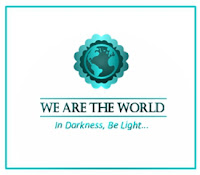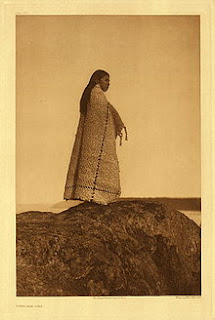Learning more about the pioneers (on the Canadian west
coast) of what I would call 'our age' ... ie Victorian life onwards - we'd
recognise houses, tea parties etc ... earlier than that it'd have been pretty
rustic and rough ...
 |
Water colour by Kathleen O'Reilly - showing the drawing
room awnings to protect the textiles from the sun
(the house today is protected with sun blinds) |
Point Ellice house built in 1861, bought six years later by
the O'Reilly family ... and as Peter and Caroline's family expanded the house
was altered, the gardens developed ... with meticulous records being kept ...
 |
| Boating celebration for Queen's Birthday late 1800s |
Access to the house was either by the water ... the Gorge
Waterway was one of the many fjord-like inlets that abound in this part of the
world ... or a rough track ... yet Peter O'Reilly insisted the gravelled driveway was meticulously raked and graded ....
 |
| Cottage Garden Border |
... it would have been quiet, surrounded by nature, yet easily
accessible from Victoria, by then capital of British Columbia ... 'invasion for the gold, by the Americans,
was to be avoided at all costs!' ... being here kept control of this part of the
west coast ...
 |
Love the stained glass - reminds me
of some we knew as kids down in Cornwall |
The industrial nature of their surroundings started coming
to the fore in the late 1800s ... sawmills and rail-yards arrived ... but
family and guests could boat down the quieter waters of the Gorge.
 |
| Part of restored vegetable garden |
The family owned the house for 108 years before selling it
in 1974 to the Provincial Government - leaving everything, except their
personal possessions, behind ...
 |
| Fremontodendron ... clambering around the front door |
The cottage altered in those beginning years to accommodate
their way of life ... but by the 1880s became a rambling asymetrical home in the
popular Italianate style of that era ...
 |
Lots of old perfumed roses, and foxgloves
were out for us to enjoy |
Restoration has been possible through the archives available
to house and garden conservators ...
 |
Croquet set ... a fielder was needed
to make sure the balls didn't
disappear into the gorge! |
... original wallpapers, paint
colours, locations of pictures, clothing, earlier layouts of rooms, garden
plants and seeds ...
 |
Restored wallpaper by the
front door |
... so much could be faithfully reproduced to bring the house
back to its earlier glory - and give us an overview of life for those pioneering settlers
...
 |
| Dining room ... or warm winter room |
Guests had wicker shields fitted over the dining chairs - so
they didn't get the intense heat from the fire ...
 |
I didn't find out who these were ... but just liked them -
they were in the kitchen! |
...while the warmth from the
chimneys kept the table linens dry by means of the narrow cupboard fitted into
the sides of the chimneys above the fireplace.
 |
| The family Bible |
Ingenious - those early settlers .... that dining room as it
was warm in winter from the fire - became the family's room for 'working in'
... hence the Bible, writing table, piano etc ...
 |
| Joseph Trutch's desk - which Peter used |
Remember that WEP challenge we had in February last year - Back of the Drawer ... the family in the
1960s found letters from the first Prime Minister of Canada (1867 - 1873; 1878
- 1891), Sir John A Macdonald, to Caroline O'Reilly's brother, Sir Joseph
Trutch, when he was appointed British Columbia's first Lieutenant Governor ...
the O'Reilly's bought his desk when he decided to move back to England.
 |
| Peter and Caroline O'Reilly |
The exterior walls have been scored to make the stucco
material appear as though the house was built of stone blocks. It was painted in pale rose, dark brown trim
and with red detailing round the window sashes - faithfully restored.
A quick note to other points of interest I spotted or appear
in the guide book ...
 |
| Kitchen range on which the Chinese cook made their meals |
The kitchen was very modern for the 1880s ... a cast iron
French range (coal and wood-burning) ... a copper hot water tank, heated by the
tubes running through the stove (an earlier one had exploded).

There's even a ceramic water filter ... a block of charcoal
inside purifies the drinking water! Made
in London by the Silicated Carbon Filter Co. Patented Self-Aerating Moveable
Block.
 |
| Butler's Pantry |
A 154 piece of Minton china, King's Border is on display in
the dining room ... along with other sets of china in the butler's pantry ...
including large serving platters and what looks like a cake plate - which is
actually a dark blue Wedgwood covered cheese plate decorated with a raised
white fern motif.
The curators have secured the china ... so it hopefully
doesn't get damaged in one of the many small earthquakes we get here ...
 |
The drawing room ... with the piano and harp given
to Kathleen by Lady Trutch |
A Victorian drawing room's overcrowded arrangement was
common at that time ... Kathleen O'Reilly was very talented and simply decided
she did not want to leave Point Ellice ... staying on after her parents died ...
devoting herself to keeping the house and garden going as her parents had
aspired to.
 |
Jerusalem Sage - drought resistant plant ...
but I loved it - Phlomis Russeliana |
Rudyard Kipling visited Victoria, but not Point Ellice
house, however he remarked that the city was 'more English than the English' ...
... the house reminded me of my early home ... particularly
the garden with the borders, roses, and hollyhocks - which weren't out ... but the guide book shows
them ...
 |
| Kathleen, Frank and John |
Point Ellice is a true historical record of the life and
times of a family home and garden at the end of the 1800s ... not many properties
are able to boast this sort of accurate history ... a lovely day out and visit
...
Hilary Melton-Butcher
Positive Letters Inspirational Stories







































